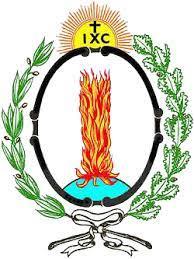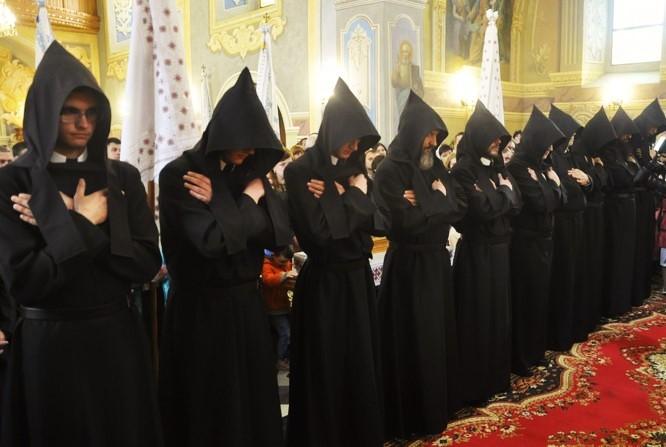About us
The Basilian Order of St. Josaphat is an international clerical order of men of Papal right, which belongs to the Byzantine church tradition. It is present in various Churches that possess their own canon law (sui iuris).

The Order is based on the spiritual heritage of Saint Basil the Great (+379), but its organization as a centralized monastic Order is due to Joseph Veliamin Rutsky (+1637) who laid out its first set of Rules, and the holy hieromartyr Josaphat Kuncevych (+1623) who gave clear direction to the foundation of the Order through his spirituality and his apostolic work centered on Christian unity.
These three saintly figures delineate the initial stage of the Order. Three component elements belong to their spiritual identity: life in common, apostolic work and activity, which is directed to Christian unity.
Name
The Apostolic See gave the Order is official name in 1932: “The Basilian Order of St. Josaphat.” (Ordo Basilianus Sancti Josaphat), but the traditional name was: “The Order of St. Basil the Great” (Ordo Sancti Basilii Magni), which was the source of the abbreviation – OSBM. For a long time, in various languages, the faithful have referred to the Order’s members as “Basilian Fathers.”
Goal and objectives
The goal of the Order lies in seeking to realize the image of God in oneself in all circumstances and in the sanctification of its members through perfectly striving after the example of the life and teachings of our Lord Jesus Christ. This is done by practicing the evangelical counsels of obedience, chastity and poverty, according to the teachings of Saint Basil the Great, in the spirit of the holy hieromartyr Josaphat and metropolitan Joseph Rutsky, according to the constitutions of the Order, dedicating oneself to the achievement of perfect love in the service of the Kingdom of God for the development of the Church and the salvation of the world.
The special goal of the Order is: to dedicate oneself to the contemplative life and the Divine Office; to pursue comprehensive pastoral work; to defend and strengthen unity among Christians; to provide to the Church experienced and dedicated workers according to the pattern of St. Basil the Great, St. Josaphat, and the other Basilian martyrs and confessors.
Emblem

The Basilian emblem is composed of the following elements: a pillar of fire framed by an arch, which stands for the fire of love – a symbol of enduring service of God and neighbour. An image of the sun, a symbol of the Saviour Jesus Christ, surmounts the pillar of fire. A monogram of Jesus Christ appears within the sun, above which appears the cross, as a call to follow Him. A wreath composed of two branches surrounds the pillar. One branch is oak and the other is laurel. The oak branch symbolizes stability and strength in spiritual growth and work. The laurel branch symbolizes the eternal reward of those who persevere.
Monastic habit

The monks wear the Basilian monastic garb, which is marked by simplicity, as a symbol of consecration and a mark of witness. The generally accepted garb in the Basilian Order of St. Josaphat is composed of the following elements: a black habit with a white collar, a sash or belt, mantle, hood, pectoral cross and scapular.

 Basilian Order of Saint Josaphat
Basilian Order of Saint Josaphat 

